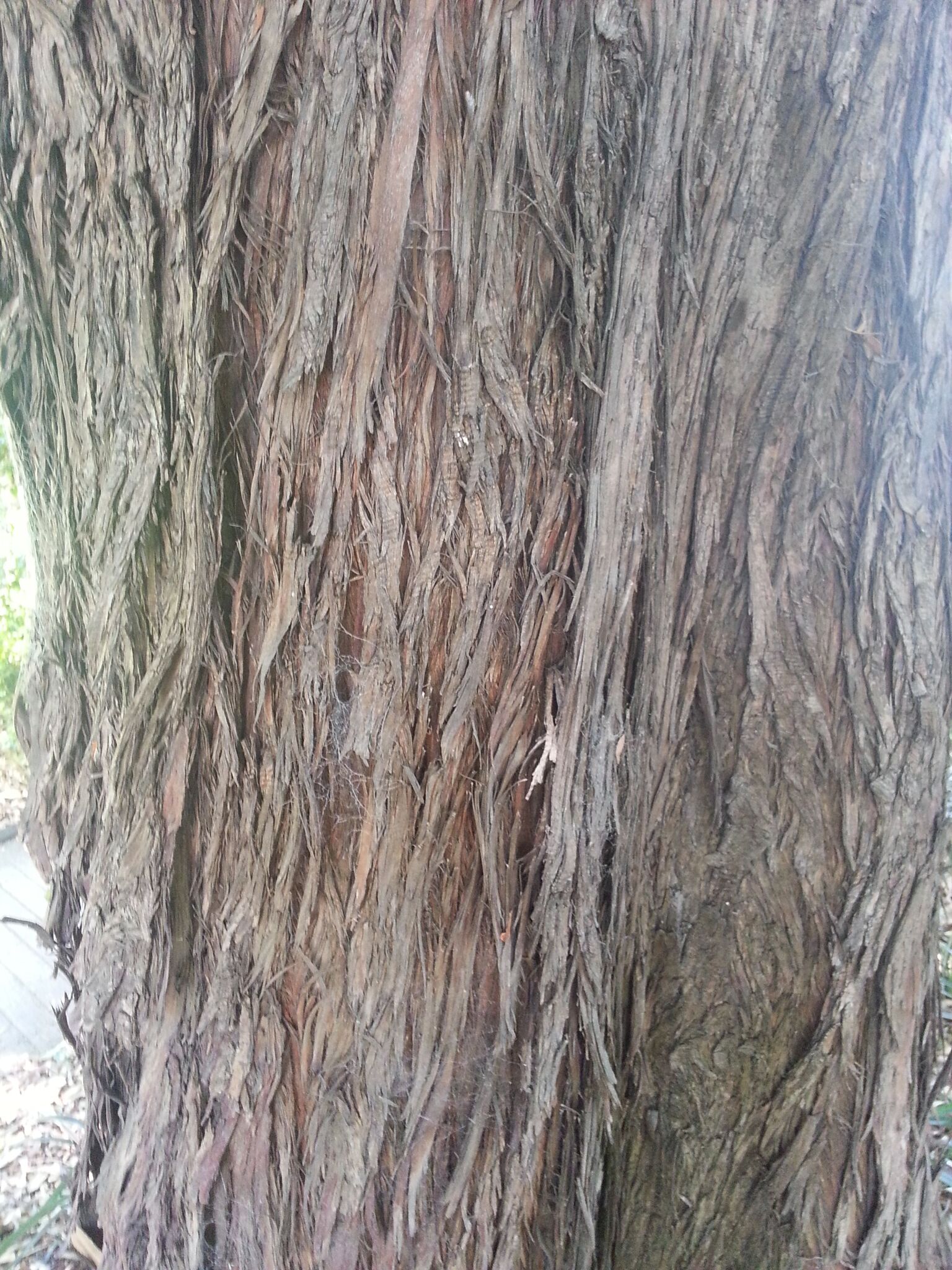
A dense-foliaged, dark green tree to 10 m or so in cultivation but 40 m or more in the wild. Bark fibrous. New growth yellow-green. Leaves alternate, simple, entire, narrowly oblong to lanceolate, 5-15 cm long, 6-12 mm wide, shortly pointed at the tip, dark green above, paler beneath; stalk, if present, extremely short. Male cones 2-3 cm long in axillary catkin-like clusters. Female cones solitary in the leaf axils. Immature fruit green with a waxy bloom, mature fruit having a seed with a fleshy purple-black receptacle to 18 mm long, Apr.-June.
Occasionally found in old public parks and gardens but now rarely cultivated.
Qld, NSW. Grows naturally in sub-tropical rainforest along rivers and the coast from Nowra in NSW to the Queensland border.
The wood is used for furniture, planking and posts. Jellies and jams with a resinous plum-like flavour may be made from the fleshy purple-black receptacles of the fruit.
Rigid oblong to lanceolate leaves.
NSW: Albury (Bot. Gds); Faulconbridge (Jackson Park); Jervis Bay (Bot. Gds); Sydney (Cetennial Park; Royal Bot. Gds). VIC: Balwyn (Maranoa Gardens); Burnley (V.C.A.H.); Castlemaine (Bot. Gds); Caulfield (Park); Geelong (Bot. Gds); Parkville (Melbourne University Botany Department Systems Garden); Prahran (Victoria Gds); Melbourne (Royal Bot. Gds, 'E' Gate). ACT: Australian National Bot. Gds. TAS: Hobart (Royal Tasmanian Bot. Gds).
P. macrophyllus (Thunb.) D. Don is sometimes offered and has similar leaves but they are waxy blue, not pale green, below. P. macrophyllus var. maki Sieb. which has shorter, narrower, densely distributed, round-tipped leaves.
Source: (1995). Podocarpaceae. In: . Horticultural Flora of South-eastern Australia. Volume 1, Ferns, conifers & their allies. The identification of garden and cultivated plants. University of New South Wales Press.
